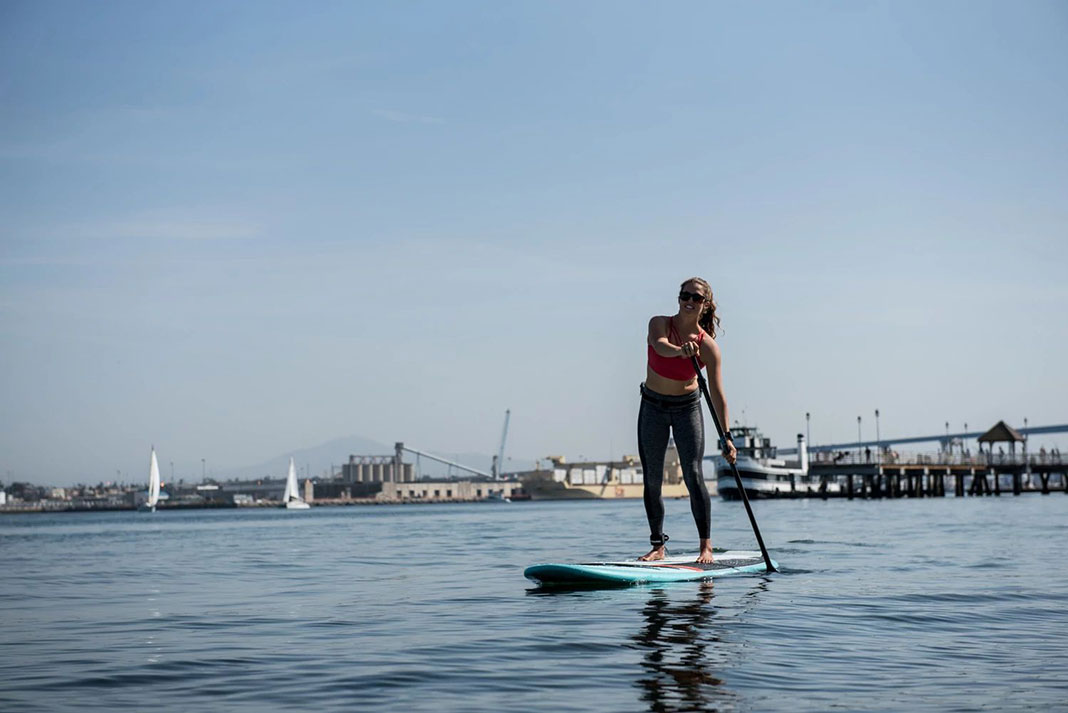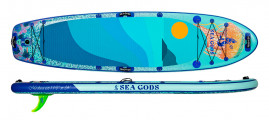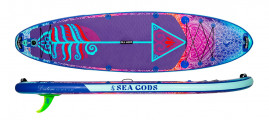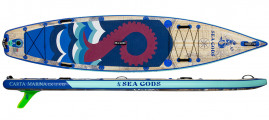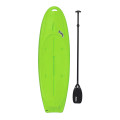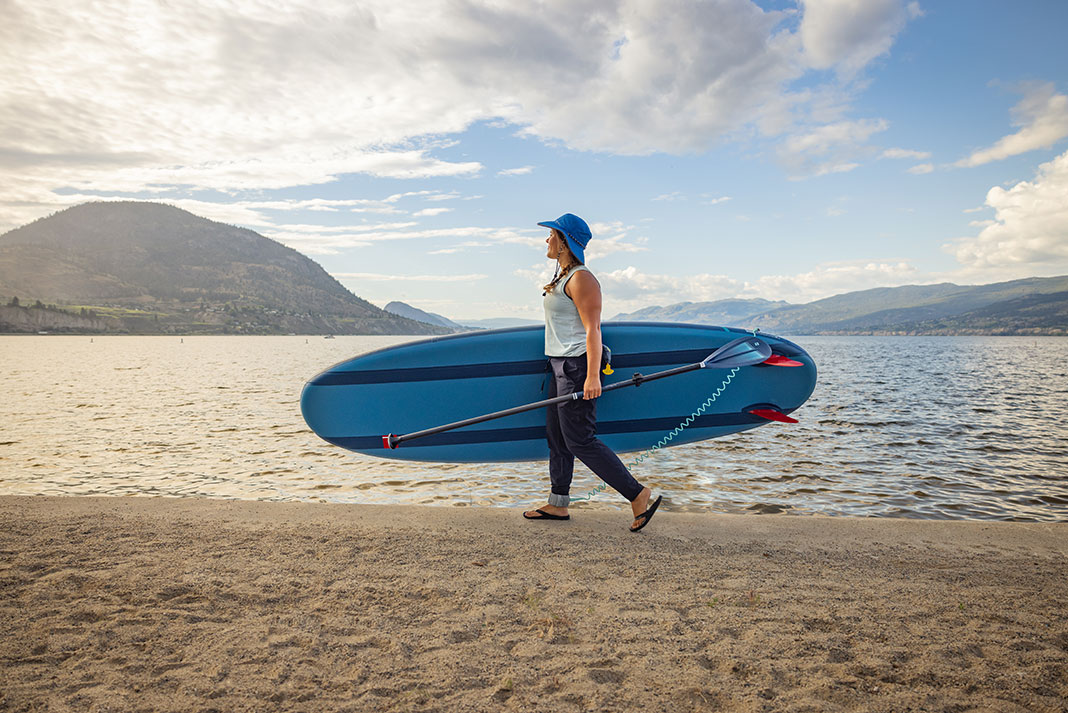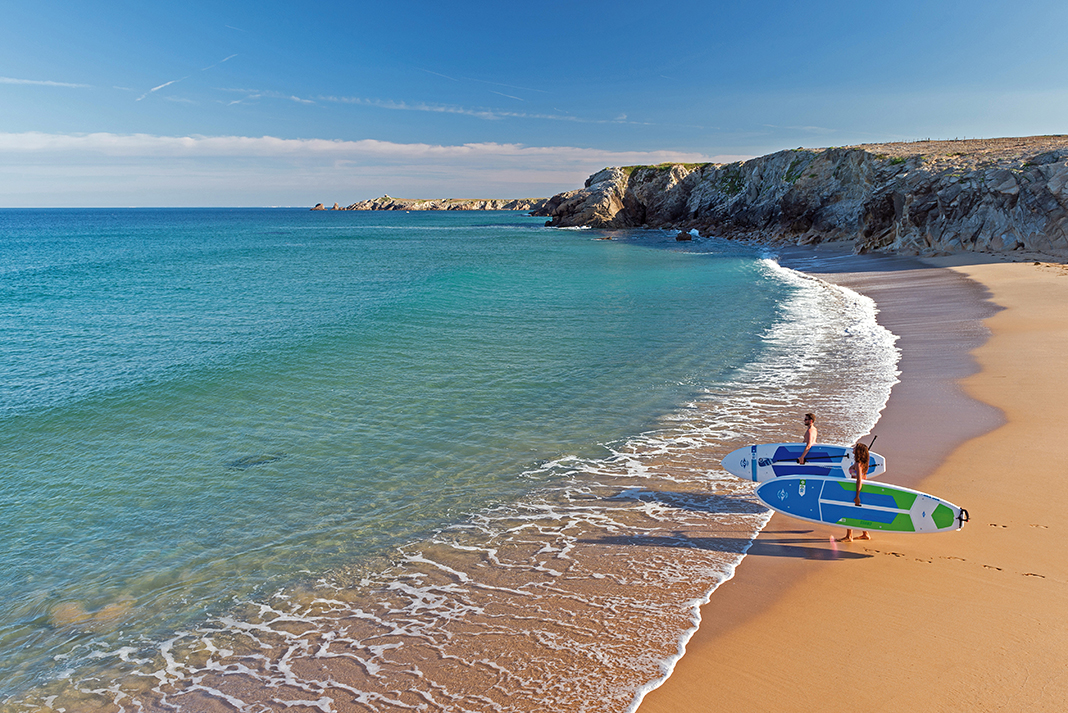The best paddleboard for beginners depends a lot on personal preferences and what you hope to do with your paddleboard. Are you looking for a good beginner paddleboard for casual use with family and friends? Or do you want a higher performance paddleboard that will allow you to develop your paddling skills without requiring investment in another board as you progress?
Are you looking for a good beginner paddleboard to share with a child or pet? Will you paddle longer distances, or do you aspire to dip your toes in mellow surf waves? If you have limited storage space or plan to travel a lot with your board, the best inflatable paddleboard for beginners could also be the best fit for your needs. You may ask, What is the best paddleboard for beginners? The short answer is: It depends.
Happily, we’re here to help! Our Paddling Buyer’s Guide lists every beginner paddleboard on the market, including specs, prices, reviews and where to buy. This beginner paddleboard buying guide offers an overview of what’s available and where to find it—as well as providing answers to all your most pressing questions about finding a good beginner paddleboard.
Top picks: Best beginner paddleboards for 2024
The following beginner paddleboards have received the highest star ratings from reviewers in our Paddling Buyer’s Guide. See and review all beginner paddleboards here.
Best Beginner Paddleboards
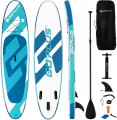
Inflatable SUP 11'
Shop for beginner paddleboards
Are you shopping for a beginner paddleboard and overwhelmed by all the choices, options and places to buy? Follow the links below to discover what’s best for you based on your paddling aspirations. Links will take you to our comprehensive Paddling Buyer’s Guide, where you’ll find every beginner paddleboard on the market, including specs, prices, reviews and where to buy.
Shop by type
Shop by body of water
Shop by brand
How to buy a beginner paddleboard
Wondering how to buy a paddleboard for beginners? There are lots of beginner paddleboards to choose from on the new and used market. The considerations of what is a good beginner paddleboard are the same whether you’re buying new or used, or from a paddling shop or private seller. The first step of a diligent buyer is to do some homework on the specific attributes of the make and model paddleboard you’re considering; our Paddling Buyer’s Guide is a great place to start.
Overall condition
If you’re shopping for used paddleboards, be scrupulous about checking the board’s condition to ensure you’re not buying someone else’s problem. Overall condition reveals a lot about the quality of the board. Examine the deck (top), bottom and sidewalls of the board for deep gouges, obvious abrasions, fading (due to prolonged exposure to the elements) or deformities.
Many beginner hard boards—paddleboards that don’t pack down for storage or travel—are made from durable plastics that can withstand plenty of abuse. Some damage is fine, especially if the shape of the board remains intact.
Hard boards made from composite materials are more fragile; check for cracks that feel spongy under pressure or chips that show the weave of the material beneath the shiny outer coating. This sort of damage can indicate potential leaks; the buoyant foam core that keeps the paddleboard afloat could become waterlogged on your first outing. Composite paddleboards can be repaired by a professional so minor damage doesn’t have to be a deal-breaker, but any damage should be factored into the purchase price.
Be especially cautious when buying a second-hand inflatable paddleboard. Many beginner paddleboards are inflatable designs that are convenient to store and transport; these boards can be rolled up to fit in a compact car or on public transit. Good quality inflatables are durable and extremely impact resistant, but all inflatable paddleboards require an extra measure of care during storage and inflation.
Inflatable boards that are stored damp could show signs of mold or mildew. If left inflated in full sun, the air chambers or valves could rupture from the air expanding inside. Inspect all valves carefully, checking for dirt and debris and listening for leaks. Fully inflate the paddleboard and wait to see if it holds air. Even better, take it out on the water for a test paddle; an inflatable paddleboard should feel stiff and remain firm—a board that becomes squishy indicates a slow leak.
Outfitting
Outfitting on a good beginner paddleboard includes the foam deck pad, leash plug, deck bungees and—most importantly—the fin or fins underneath the board at its tail. Many paddleboards have a single center fin to aid with stability and paddling straight, while some surf-focused boards also have two smaller “thruster” fins to assist with carving on a wave. Examine each of these parts individually, paying special attention to the fins to ensure they are not bent or damaged and feel secure with no screws missing.
On the water
It’s always best to try before you buy to make sure the paddleboard performs as you expect. Arrange a meeting place with the seller that allows you to take a few moments on the water. Dress in clothing that will keep you warm for the water temperature, should your test drive include an unplanned swim!
Remember: Wear a life jacket. Everyone, even strong swimmers, needs to wear a life jacket at all times when on the water. It is extremely difficult to put a life jacket on once you fall into the water. Even a light wind can blow a paddleboard away from you, faster than you can swim. Use an ankle leash and always wear a USCG-approved Level 70 or Type III life jacket designed for paddling.
Make a deal
In general (that is, before COVID-19), the typical starting point for a used paddleboard in moderate condition was about half its retail price. But nowadays, just like the used car market, quality used paddleboards are holding their value more than ever before and reselling at higher prices. However, you can use this as a starting point in haggling a fair price.
Add some accessories
Ask the seller if they’re willing to throw in a paddle, leash or PFD (make sure it fits and is Coast Guard-approved for the location you’ll be paddling). Or, maybe you can save a few dollars if you have your own paddling gear.
For more tips on what to look for when selecting a used paddleboard, read our article on How To Buy A Used Paddleboard.
Beginner paddleboard buying guide
Wondering what is the best paddleboard for beginners? That simple question is often a starting point for so many more. Try before you buy is the best advice to help find the perfect paddleboard for you. Borrow friends’ beginner paddleboards to get a sense of what’s available and how different materials and designs perform on the water.
Shop at paddling and outdoor specialty stores, which offer far more expertise (and a better selection of quality paddleboards) than generic big box outlets. Lastly, favor retailers that provide the option of test paddling good beginner paddleboards before you buy.
Here are expert answers to some of the most common questions from beginner paddleboard buyers.
-
What is the best style paddleboard for beginners?
The best style of paddleboard for beginners is perhaps the greatest variable to consider in buying a good beginner paddleboard. But the answer is simple: It all depends on how you plan to use your board, now and in the future.
Consider your aspirations: Do you want a cheap paddleboard that’s fun for the entire family? Or do you dream of developing your skills to progress to more advanced paddleboarding on waves or longer tours? It’s easy to pick up a cheap board, but you’ll want to search more carefully—and spend considerably more money—if you want a higher performance paddleboard.
Good paddleboards for beginners fall into two main styles: all-around boards and touring boards. If you are more of a casual paddler, or hope to progress to SUP yoga or surfing small waves, an all-around board with a round nose and flat—or “planing”—bottom is likely the best fit. If you are looking for the best inflatable paddleboard for beginners, most of the boards you find will have an all-around shape.
If you enjoy paddling quickly and aspire to longer tours on choppier waters, you’ll probably enjoy a touring paddleboard with a more V-shaped nose and bottom. Touring boards also tend to be longer and have higher capacity, making them a good choice for those who want to paddle with a large breed dog.
Finally, it’s very important to consider the type of places you w
ish to paddle. Do you plan on paddling in shallow or rocky waters? If so, an all-around inflatable paddleboard will probably offer the greatest comfort, durability and stability. If deeper, open waters are your destination, a touring board that cuts through any light chop will feel faster and more stable.
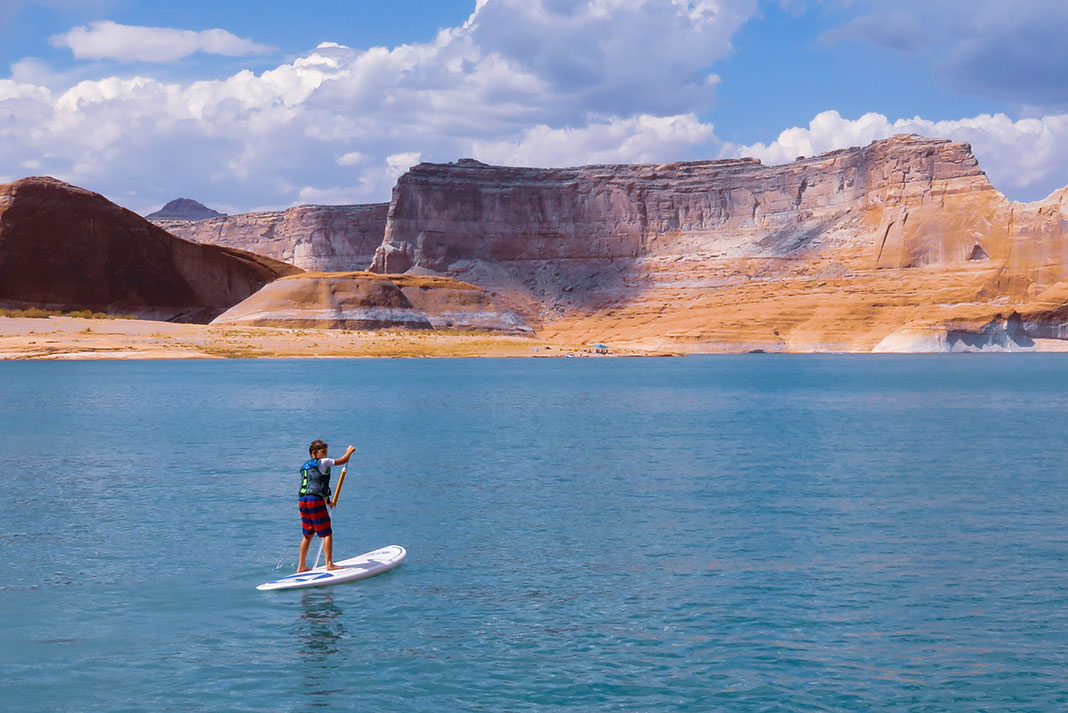
-
What is the easiest paddleboard to use?
The easiest paddleboard for beginners to use will be one that is sized appropriately for their weight range. Paddleboard weight capacity depends on the volume (buoyancy) of the board, with smaller boards suitable for lighter paddlers and larger boards accommodating paddlers from 200 to 350 pounds.
Look at the thickness of the board, as well as length and width, to determine how stable the board will feel on the water. A thicker board will feel less tippy than a thin board, with inflatable paddleboards generally being thicker than hard boards.
This is one reason why many beginner paddleboarders prefer inflatable boards; inflatables often have a uniform thickness from side to side and nose to tail, making them considerably more stable than similarly sized hardboards. Hardboards are sculpted to reduce weight and optimize race or surfing performance, but they typically provide less stability and buoyancy for the beginner paddler.
Another reason many new paddlers prefer inflatable boards is the soft top, which is more forgiving if (when!) you fall on the board. If you have your sights set on a beginner hardboard, look for models with a full foam deck, also known as “soft-top” boards.
-
What size paddleboard for beginners?
Beginner paddleboards range from as short as eight feet to over 14 feet, but most SUPs are between 10 and 12 feet long and 30 to 34 inches wide. Wider boards offer more stability, but narrower boards are faster on the water. Shorter length boards are primarily used for surfing, or for kids, and are more easily maneuverable.
In addition to length and width, the board thickness is also a consideration. Thinner boards will have less volume, or buoyancy, and therefore have lower weight capacities. Thicker boards, such as inflatable paddleboards, have high buoyancy and higher weight capacity. Thicker boards are great for beginners, general paddling, touring and racing, while thinner boards are usually preferred for SUP surfing.
-
Best paddleboard length for beginners
Length is a key element in the performance and intended use of a paddleboard. Factors affecting the best length for beginners include paddler height, the range of water and wind conditions you expect to encounter, who else might be using your board, and your likelihood of having passengers on board, such as small children or pets.
The most popular all-around paddleboard length for beginners is 10 to 12 feet. If portability and maneuverability are priorities, or if you weigh less than 150 pounds, you may want to go shorter than average and opt for a board in the 9’6” to 10-foot length range.
If speed and straight tracking are priorities, consider a 12’6” touring board. Given the popularity of SUP touring, 12’6” should be a very popular length, but some buyers shy away from this length due to storage concerns. However, if you go with an inflatable model, the extra length does not pose a storage issue, and you can expect solid performance from a quality inflatable touring paddleboard.
-
Best paddleboard width for beginners
Most all-round paddleboards for beginners fall between 32 and 34 inches in width. However, heavier paddlers and those looking for extra stability should look for an all-around board that is 33 to 34 inches wide. While you can go even wider, you may end up with a board that feels sluggish and less fun to paddle. Touring boards typically run a bit narrower—30 to 32 inches—since their longer waterline also provides additional stability.
-
Best paddleboard brands for beginners
You’ll find countless manufacturers of beginner paddleboards. Just like any type of consumer product, some manufacturers are better than others and each will have its own characteristics. In general, you get what you pay for.
There are now hundreds of inflatable SUPs available to purchase in stores and online. As the market grows and becomes saturated with mass-produced, single-layer and fusion inflatable boards, it becomes difficult to know which inflatable paddleboard is right for you at a price you can trust. Avoid the cheapest box store or Amazon inflatable boards; a poorly manufactured product equals a poor or unsafe time on the water—and a quick trip to the landfill.
-
Are inflatable paddleboards good for beginners?
Inflatable paddleboards are a great option for beginners. In addition to superior durability and impact resistance, inflatable boards often have a uniform thickness from side to side and nose to tail, making them considerably more stable than similarly sized hardboards. Hardboards are sculpted to reduce weight and optimize race and surfing performance, but they provide less stability and buoyancy for the beginner paddler.
Another reason many new paddlers prefer inflatable boards is the soft top, which is more forgiving for unexpected tumbles—and more comfortable for passengers like kids and pets.
-
Safest paddleboard for beginners
The safest paddleboard for beginners is one that provides enough flotation and stability for your skill and body weight, and suits the type of paddling you will be doing. If you are shopping for the best inflatable paddleboard for beginners, invest in a quality board that stays firmly inflated during use.
Always use an ankle leash when paddling, and check that it is securely fastened to the leash plug on the tail of your paddleboard.
Beginner paddleboard reviews
Once you’ve narrowed down your options, read our in-depth reviews on paddleboards for beginners to discover the best match for you.
Feature photo: Soulaymane Benchekroun/Pexels



